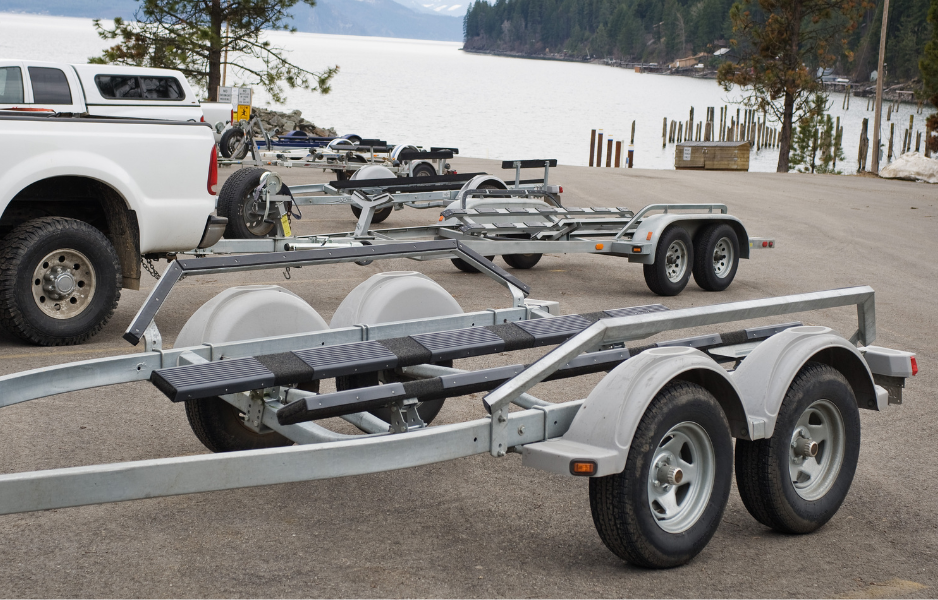Recreational Trailer Safety – Know Before You Tow

R. Scott King, BSME, CFEI, Principal Automotive/Mechanical Engineer
For many people, summer recreation includes the use of small personal watercraft and larger towable boats. Whether towing to a public launching ramp for a day, a permanent dock, or mooring for an entire season, a watercraft’s trailer is an integral component of the boating season.
While most owners understand the importance of readying their watercraft for the upcoming season, previous case studies have demonstrated that the trailers used to haul them may not receive the same level of care. Apart from their structural elements, watercraft trailers are typically simple machines requiring relatively simple maintenance checks.
Tires
Measuring tire inflation pressure and tread depth and inspecting for unusual wear are among the easiest checks to include in any trailer’s seasonal maintenance routine. However, it is important to keep in mind that aging tires can pose a risk of sudden failure, even though they may appear serviceable. The U.S. Tire Manufacturers Association (USTMA) cautions that tires subject to very low usage, as is often the case with watercraft trailers, are at greater risk of “aging out” before “wearing out.”
According to the USTMA, determining how old is “too old” should be left to the recommendation of a tire’s manufacturer. Therefore, it is important to check each tire’s date of manufacture and consult the manufacturer’s recommendations when inspecting the trailer. A tire’s date of manufacture is included in the Department of Transportation Tire Identification Number molded into its sidewall and is usually found in the final grouping of alpha-numeric coding. This number identifies the week and year during which the tire was made. For example, the date code “2821” in Figure 1 below indicates that the tire was manufactured during the 28th week of 2021.

Figure 1
Hitches
Another element common to be inspected is the hitch used to connect a watercraft trailer to the towing vehicle. Smaller trailers typically use ball-and-receiver connections, while many larger trailers use pintle hook connections. Regardless of hitch type, it is important to maintain these elements on the watercraft trailer and towing vehicle. Inspections should include checking for signs of wear, cracks, looseness, and other suspect conditions.
Safety Devices
Most trailers require the use of two safety chains that act as a “last chance” measure of security to prevent complete separation should the trailer hitch fail. These chains should be inspected for signs of wear and be replaced as needed. The off-season is also a good time for trailer users to refresh their knowledge about trailer hitch and chain safety. For example, many users do not know that the proper way to secure the chains is to crisscross them beneath the trailer hitch so that, if the hitch does fail, the crisscrossed chains will “cradle” the trailer tongue as if falls toward the road surface.
Trailers equipped with an electric braking system also possess an “emergency breakaway” battery. Using a mechanical breakaway switch that activates upon trailer separation, this battery fully activates the trailer’s brakes automatically to stop it as quickly as possible, thus minimizing the distance the wayward trailer can travel. Often overlooked, these batteries can slowly discharge over time such that if the trailer does separate, it cannot provide the power needed to fully engage the trailer brakes.
Wheel Bearings
Tires, hitches, and safety devices are typically easy to inspect and determine when repairs are needed. Wheel bearings, however, are located within the wheel hub and cannot be seen without substantial disassembly. Thus, they can be among the most neglected parts of a trailer. This can be particularly dangerous given that wheel bearings in most watercraft trailers will be submerged during vessel launch and retrieval. One bad axle seal can allow water, often highly corrosive salt water, into the bearing cavity, which can initiate a potentially catastrophic bearing failure during normal towing operations. In extreme cases, wheel bearing failure can lead to complete wheel separation.
Categories: Education | Engineering | Sports & Recreation | TransportationTags: Automotive Engineering | Mechanical Engineering | Trailer | Vehicle Inspection | Watercraft


